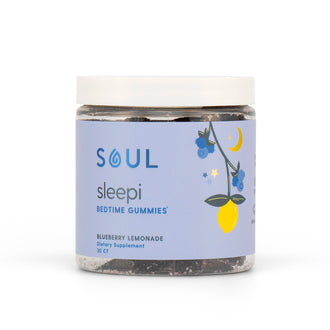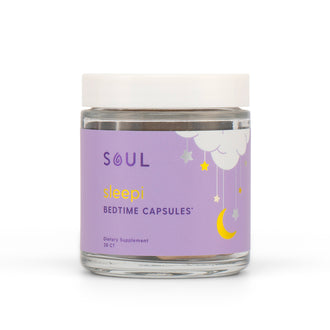
Key Takeaways:
- Concept & Origins: Understand the concept and origins of the California sober lifestyle.
- Benefits & Drawbacks: Discover the benefits and potential drawbacks of this approach to sobriety.
- Popularity & Differences: Learn why the California sober trend is gaining traction and how it differs from traditional sobriety.
At Soul, we pride ourselves on being at the forefront of holistic wellness, offering products that combine the best of nature and science. Our mission is to make wellness accessible, delicious, and effective, helping individuals achieve their best selves through thoughtfully crafted supplements.
The concept of "California sober" is gaining traction, resonating with those seeking a balanced and personalized approach to sobriety. Unlike traditional sobriety, which typically demands complete abstinence from all substances, the California sober lifestyle allows for moderate use of certain substances like marijuana, while avoiding more harmful drugs. This approach aligns well with modern wellness trends that emphasize customization and personal well-being.
In this piece, we will be discussing what it means to be California sober and why this lifestyle is becoming so popular.
What Does "California Sober" Mean?
The term "California sober" typically refers to a lifestyle where individuals abstain from most drugs and alcohol but may still partake in the occasional use of certain substances, like marijuana or psychedelics. Unlike traditional sobriety, which usually involves complete abstinence from all intoxicants, the California sober approach allows for a more personalized and flexible path to wellness. This method recognizes that total abstinence may not be necessary for everyone and that some people can still achieve a healthy, balanced life while using certain substances in moderation.
The Origins Of the California Sober Movement
The California sober movement has its roots in the cultural and social dynamics of California, particularly within its wellness and alternative lifestyle communities. The term gained popularity through public figures and celebrities who publicly shared their experiences with this approach to sobriety. One notable mention is Demi Lovato, who openly discussed their California sober lifestyle, bringing the term into the mainstream. This movement reflects a broader shift towards personalized health and wellness practices, where individuals tailor their sobriety to fit their unique needs and lifestyles, rather than adhering to a one-size-fits-all approach.
How California Sober Differs From Traditional Sobriety
Traditional sobriety typically involves complete abstinence from all intoxicating substances, often as part of structured programs like Alcoholics Anonymous (AA) or Narcotics Anonymous (NA). These programs emphasize the importance of total abstinence to achieve long-term recovery and prevent relapse.
In contrast, the California sober approach allows for the moderate use of certain substances, such as marijuana or psychedelics, while avoiding more harmful and addictive drugs like alcohol, opioids, or stimulants. This method is based on the belief that some individuals can maintain control and lead healthy lives without the need for complete abstinence. It emphasizes harm reduction, personal responsibility, and a more individualized path to wellness.
The Benefits Of Adopting A California Sober Lifestyle
Adopting a California sober lifestyle offers several benefits for those who find complete abstinence challenging or unnecessary. Here are some of the key advantages:
Flexibility And Personalization
Individuals can tailor their substance use to their personal needs and preferences, avoiding the rigidity of traditional sobriety. This flexibility allows people to determine what works best for them, rather than adhering to a one-size-fits-all approach. By customizing their substance use, individuals can find a balance that promotes their overall well-being without feeling restricted. This personalized approach can lead to higher satisfaction and long-term adherence to healthier habits.
Reduced Harm
By abstaining from more harmful substances like alcohol and opioids, individuals can minimize the risks associated with these drugs while still enjoying the benefits of less harmful substances. This harm reduction approach acknowledges that not all substances pose the same level of risk and allows for safer alternatives. For instance, choosing marijuana over alcohol can significantly reduce the likelihood of liver damage, addiction, and other severe health issues. This strategy enables people to make informed choices that prioritize their health and safety.
Improved Mental Health
For some, moderate use of substances like marijuana can alleviate anxiety, depression, or chronic pain, improving overall quality of life. Many people find that certain substances help them manage their mental health symptoms more effectively than traditional medications. This can lead to enhanced daily functioning, better mood stability, and increased engagement in social and professional activities. Moreover, the ability to use these substances responsibly can empower individuals to take control of their mental health in a way that feels sustainable and effective.
Greater Social Acceptance
This approach can make social interactions easier for those who struggle with complete abstinence in environments where substance use is common. Being California sober allows individuals to participate in social settings without feeling isolated or pressured to abstain entirely. This can reduce social anxiety and increase feelings of belonging and inclusion. By aligning their lifestyle with their social environment, individuals can maintain meaningful connections without compromising their commitment to a healthier lifestyle.
Sustainable Lifestyle
The California sober method can be more sustainable in the long term for those who find traditional sobriety too restrictive. Complete abstinence can be difficult to maintain indefinitely, leading some individuals to relapse or abandon their sobriety goals altogether. In contrast, the California sober approach offers a more manageable and realistic path, making it easier to stick with over time. This sustainability can result in more consistent and lasting improvements in health and well-being, as individuals are less likely to feel deprived or overwhelmed.
Potential Drawbacks And Criticisms
While the California sober lifestyle has its benefits, it also faces several criticisms and potential drawbacks:
Risk Of Relapse
Allowing moderate use of some substances may increase the risk of relapse into more harmful substance use for individuals with addiction histories. This approach can create a slippery slope, where the boundaries between safe use and overuse become blurred. For those with a history of substance abuse, even moderate use can trigger cravings and lead to a return to problematic behaviors. The potential for relapse underscores the need for careful monitoring and support for individuals choosing this lifestyle.
Lack Of Structure
The flexibility of this approach can lead to a lack of accountability and support, which are often crucial for maintaining sobriety. Traditional sobriety programs provide a structured environment with regular meetings, peer support, and clear guidelines, which can be essential for recovery. In contrast, the less formal nature of the California sober lifestyle may result in fewer checkpoints and less community support. This lack of structure can make it harder for individuals to stay committed to their goals and recognize when they might be veering off track.
Ambiguity And Misinterpretation
The term "California sober" can be ambiguous, leading to varied interpretations and potential misuse as a justification for unhealthy behavior. Without a standardized definition, individuals might stretch the boundaries of what is considered acceptable under this lifestyle. This ambiguity can lead to rationalizing the use of more harmful substances or excessive use of less harmful ones. Clear communication and self-awareness are necessary to prevent misinterpretation and ensure that the California sober approach remains a positive and healthy choice.
Limited Acceptance
Traditional sobriety programs and some medical professionals may not fully accept or support this approach, limiting access to certain resources and support networks. Many recovery programs and healthcare providers advocate for complete abstinence, viewing it as the safest and most effective path to sobriety. As a result, individuals following the California sober lifestyle might face skepticism or rejection from these communities. This limited acceptance can isolate them from valuable resources, making it harder to find the support and guidance needed for successful recovery.
Potential For Dependency
Even with less harmful substances like marijuana, there is still the potential for developing a dependency, which can be challenging to manage without complete abstinence. Regular use of any substance, even those deemed safer, can lead to psychological or physical dependency over time. This dependency can interfere with daily life, mental health, and overall well-being, making it difficult to maintain the balance intended by the California sober approach. Recognizing and addressing these risks is crucial for anyone considering or currently following this lifestyle.
Why Is California Sober Becoming So Popular?
The rising popularity of the California sober lifestyle can be attributed to several factors:
Cultural Shifts
There is a growing acceptance of marijuana and other substances that were previously stigmatized. Legalization and decriminalization efforts across various states have helped shift public perception, making these substances more socially acceptable. This changing landscape allows people to explore alternative approaches to sobriety without the fear of social stigma. As societal views shift, more individuals feel empowered to redefine what sobriety means to them and adopt a lifestyle that aligns with their values and experiences.
Influence Of Public Figures
Celebrities and influencers who share their experiences with the California sober lifestyle have brought attention to this approach, making it more mainstream. Public figures like Demi Lovato have openly discussed their journey with California sober, lending credibility and visibility to the lifestyle. Their influence helps normalize this approach and encourages fans and followers to consider it as a viable option. This widespread visibility creates a ripple effect, leading to broader acceptance and adoption among the general population.
Emphasis On Personal Wellness
The increasing focus on personalized health and wellness allows individuals to tailor their sobriety to their unique needs, making the California sober approach appealing. Modern wellness culture emphasizes self-awareness and individualized health plans, promoting the idea that there is no one-size-fits-all solution to well-being. This perspective aligns perfectly with the California sober approach, which advocates for a customized path to sobriety. By prioritizing personal needs and preferences, individuals can achieve a balanced and sustainable lifestyle that supports their overall health.
Accessibility Of Information
The proliferation of information through social media and other online platforms has made it easier for people to learn about and adopt this lifestyle. Online communities, blogs, and informational websites provide a wealth of resources on the California sober approach, making it more accessible than ever before. These platforms offer support, advice, and shared experiences from others who have adopted this lifestyle, helping newcomers navigate their journey. The easy access to diverse perspectives and success stories empowers individuals to make informed decisions about their sobriety.
Disillusionment With Traditional Methods
Some individuals find traditional sobriety programs too rigid or ineffective for their personal circumstances, leading them to seek alternative methods like California sober. Traditional programs often require complete abstinence, which can feel unattainable or overly restrictive for some people. This rigidity can result in frustration and relapse, prompting individuals to look for more flexible options. The California sober approach offers an alternative that acknowledges the complexity of addiction and recovery, providing a more adaptable and compassionate path to sobriety.
Final Thoughts
The California sober lifestyle offers a flexible and personalized approach to sobriety that resonates with many individuals in today's evolving cultural landscape. By allowing the moderate use of certain substances while avoiding more harmful ones, this method provides an alternative for those who find traditional sobriety too restrictive or unattainable. While it comes with potential risks and criticisms, the growing popularity of California sober highlights a broader shift towards individualized health and wellness practices. Whether it’s due to the influence of public figures, the focus on personal well-being, or the disillusionment with conventional methods, the California sober lifestyle is making a significant impact and offering a new path for those seeking balance and health in their lives.
Read Also:
- Comparing THCA and Delta 8: Key Differences
- Migraine Relief with CBD Oil
- Analyzing the Differences: THCA and Delta 9
Frequently Asked Questions About California Sober
What is the main difference between being California sober and traditional sobriety?
Being California sober allows for the moderate use of certain substances, like marijuana, while traditional sobriety typically involves complete abstinence from all intoxicants.
Can someone who is California sober still participate in traditional sobriety programs?
Participation in traditional sobriety programs may be challenging for someone who is California sober, as these programs usually advocate for complete abstinence.
Is the California sober approach scientifically supported?
Research on the California sober approach is limited, and its effectiveness can vary widely among individuals. It’s often based on personal experiences and anecdotal evidence.
Are there any legal considerations for adopting a California sober lifestyle?
Yes, the legality of substances like marijuana varies by location, so it’s important to understand and comply with local laws when adopting a California sober lifestyle.
How can someone find a supportive community for the California sober lifestyle?
Online forums, social media groups, and local wellness communities can be great places to find support and connect with others who follow the California sober approach.
What are some common misconceptions about being California sober?
A common misconception is that being California sober means excessive use of marijuana or other substances, but in reality, it’s about moderate and mindful consumption.
Can the California sober approach be a temporary phase for some people?
Yes, some individuals may use the California sober approach as a transitional phase before moving towards complete sobriety or as a long-term lifestyle choice.
Is the California sober approach suitable for everyone?
No, the suitability of the California sober approach depends on individual circumstances, including their history with substance use and personal health needs.
How can someone transition from traditional sobriety to a California sober lifestyle?
Transitioning should be done cautiously and ideally under the guidance of a healthcare professional to ensure it’s a safe and healthy choice.
What role do healthcare professionals play in supporting a California sober lifestyle?
Healthcare professionals can provide guidance, monitor health impacts, and offer support to ensure that the California sober approach is beneficial for the individual.
Sources:
- What is the “California Sober” Approach to Substance Use? (n.d.). Cleveland Clinic. https://health.clevelandclinic.org/what-is-cali-sober
- Londoño, E. (2024, February 4). What Does Being Sober Mean Today? For Many, Not Full Abstinence. The New York Times. https://www.nytimes.com/2024/02/04/us/addiction-california-sober.html
- Jarvis, L., & Opinion, B. (n.d.). Going “California sober” may be bad for your heart finds study. Medicalxpress.com. Retrieved June 12, 2024, from https://medicalxpress.com/news/2024-03-california-sober-bad-heart.html






